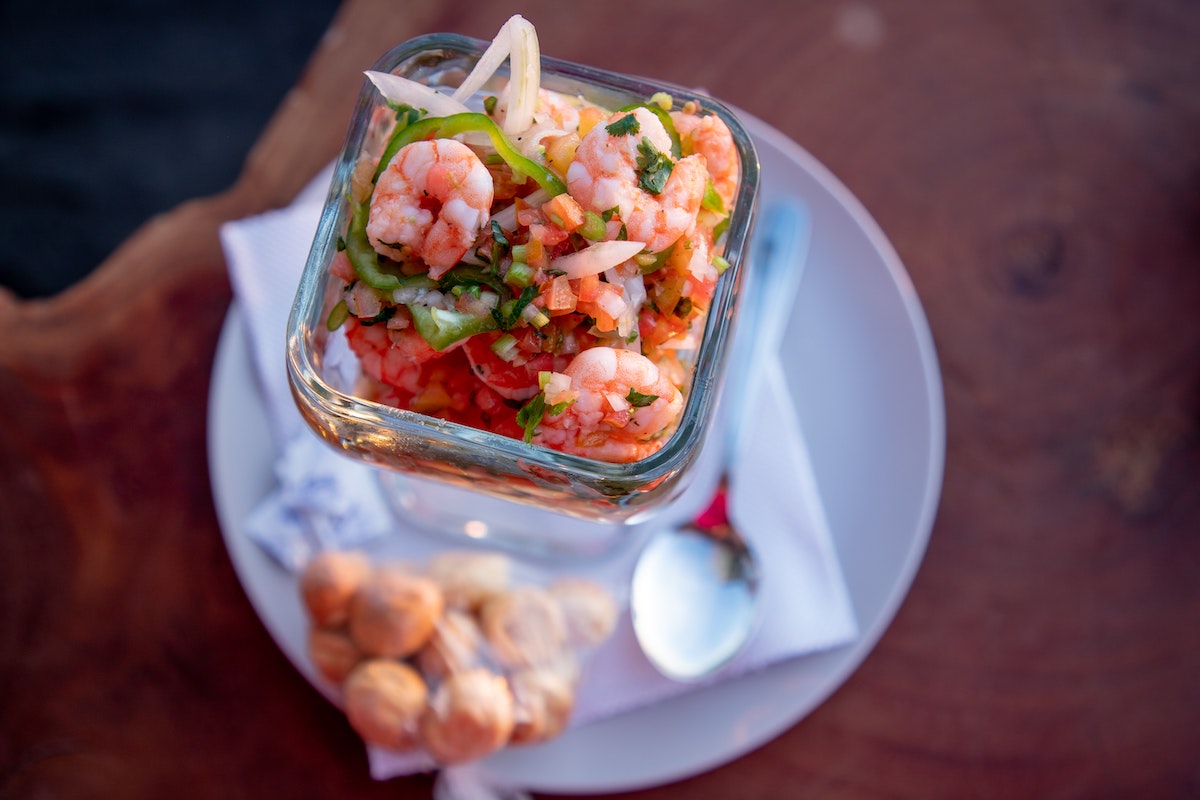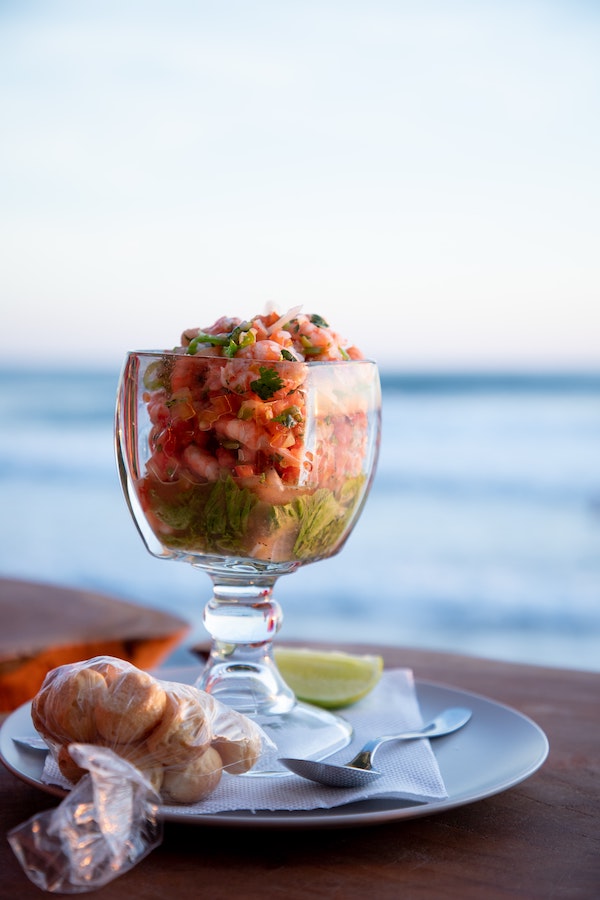
The Delicious History of Ceviche: Peru’s National Dish (Plus a Recipe to Make Your Own!)
By: Sarah Stone
Skip to Section
Peru’s rich history and beautiful landscapes have made it a renowned travel destination—so much so, that this country has been branded the gastronomic capital of Latin America. And this can be attributed in part to the cascading popularity of ceviche, one of the most delectable and famous Peruvian dishes. This savory yet straightforward delicacy exploded into the world stage as an accessible meal that is nothing short of delicious. In its purest form, ceviche is made of raw fish, hot peppers, and lime juice with some chili.
Variations of this sumptuous dish can now be found in many coastal areas of Latin America, including Mexico, Chile, Ecuador, and Colombia, but ceviche claims origin in Lima, Peru. While the source of this culinary delight is disputed, ceviche has its own National Day (June 28) in Peru—a testament that it’s one dish that locals and tourists alike love and celebrate. Let’s learn about the history of ceviche, Peru’s national dish!
A Short History of Ceviche
Although ceviche’s exact origin is somewhat murky, a fascinating archeological theory indicates that this seafood delicacy originated among the coastal Moche civilization of Peru about 2,000 years ago. The Moche marinated seafood using fermented juice prepared from local banana passionfruit—and later, during the era of the Inca Empire, fish were marinated using an Andean fermented beverage known as chicha. This helps to “cook” the fish without heat.
Once the Spanish colonists arrived in Peru, they brought citrus fruits whose juice become the sole component for marinating the fish in ceviche preparation. It was during this time that ceviche began to fully be developed as a national dish, with local and regional flavors being added to customize it.
The name ceviche can be traced to various sources. In Latin, the term “cibus” means “food for men and animals,” and some believe this may be the origin. Ceviche’s name also may come from the Spanish word “escabeche,” which means “pickle.”
Ceviche Preparation

Photo by Yasmine Duchesne on Unsplash
While only a few ingredients are traditionally required to prepare ceviche, you can find lots of different recipes and variations depending on where you go and what tastes you’d like to try. Let’s have a look at the most popular preparation methods.
Ingredients
Start with raw fish—traditionally, you’ll use sea bass, corvina, or other light, white fish. The quality of the fish is essential, as marinating the fish doesn’t kill all bacteria as it would when cooking with heat. Outside of Peru, you might find ceviche prepared with shrimp (especially popular in Ecuador and Guatemala).
To complete the dish, you’ll want to add limes, onions, spicy peppers, cilantro, corn, and sweet potatoes.
Cooking Process
Since cooking food with heat can alter the structure of its proteins, ceviche is prepared by marinating a fresh fish in a lime-based mixture with onions along with aji amarillo and rocoto peppers. Usually the fish will marinate for a few hours, though recent versions of the recipe call for a much shorter immersion of just a few minutes to allow for a lighter, less rubbery texture. While the citric acid allows you to eat the fish raw, it doesn’t kill parasitic worms or bacteria—be sure to use very fresh fish for preparation, or even consider boiling the fish before marination. Cut the fish into small pieces to get a full immersion.
Keep the mixture of fish, lime juice, peppers, and onions refrigerated while marinating. Once you’re ready, serve on a plate alongside corn and boiled potatoes, and top with cilantro and salt to taste, with lettuce on the side.
Typical Ceviche Menu
When you walk into a Peruvian restaurant, the standard menu incorporates ceviche as the main course, with sweet potatoes and corn as side dishes. Depending on the region or restaurant, other ingredients you may see are seaweed, garlic, and different variations of peppers. While seasonal and local ingredients may change, the typical recipe is not usually altered even if the accompanying side dishes are. Appetizers at Peruvian restaurants also tend to contain the marinade that helped to cook the fish.
Hungry Yet?
Now that you know more about the history of ceviche, you can understand why so many people flock to Lima to whet their palates with the region’s tantalizing gourmet options! With the explosion of tourism in Peru, there is no doubt that their cuisine has played a critical role. With a holiday to its name and a ton of amazing restaurants all over the country, it is no longer a secret that ceviche is a delicacy that every gourmet connoisseur is looking to try out.
Want to know more about the history of different foods? Check out our articles on the pisco sour, the mojito, and mapo tofu!
About the Author
 As the editor-in-chief of Frayed Passport, my goal is to help you build a lifestyle that lets you travel the world whenever you want and however long you want, and not worry about where your next paycheck will come from. I've been to 20+ countries and five continents, lived for years as a full-time digital nomad, and have worked completely remotely since 2015. If you would like to share your story with our community, or partner with Frayed Passport, get in touch with me using the form on our About page.
As the editor-in-chief of Frayed Passport, my goal is to help you build a lifestyle that lets you travel the world whenever you want and however long you want, and not worry about where your next paycheck will come from. I've been to 20+ countries and five continents, lived for years as a full-time digital nomad, and have worked completely remotely since 2015. If you would like to share your story with our community, or partner with Frayed Passport, get in touch with me using the form on our About page.Featured image by Yasmine Duchesne on Unsplash
Information published on this website and across our networks can change over time. Stories and recommendations reflect the subjective opinions of our writers. You should consult multiple sources to ensure you have the most current, safe, and correct details for your own research and plans.
Frayed Passport is a participant in the Amazon Associates Program, an affiliate advertising program designed to provide a means for sites to earn advertising fees by advertising and linking to Amazon.com. We also may share links to other affiliates and sponsors in articles across our website.





